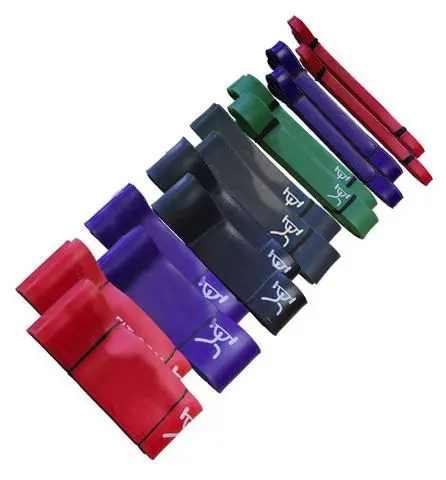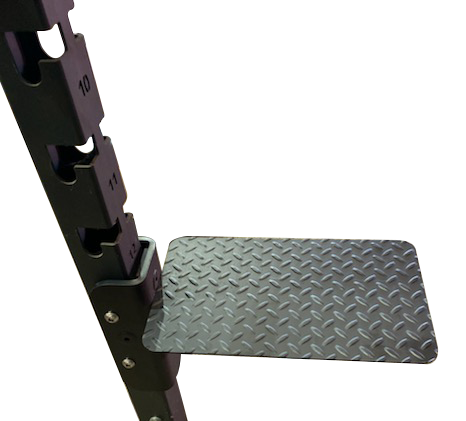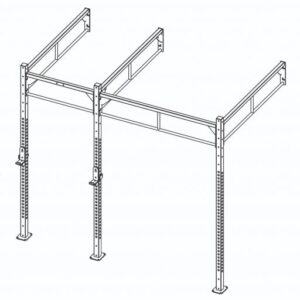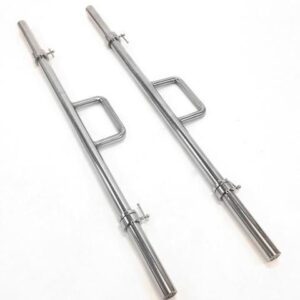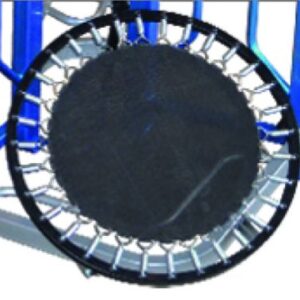Add resistance – or support – to your workout with resistance bands! It’s one of the best mobility and resistance training tools around. Use them to remove slack at the beginning of reps, resulting in immediate muscle engagement, or use them to help pull you up off the bottom when trying something new. Sky’s the limit when it comes to these.
Our strength bands utilize the same or better quality latex as the competition, but we offer them at substantially lower prices. All bands have the resistance level clearly marked on them.
Mini and super-mini bands (#1 & #2) are best for general conditioning, rehabilitation, stretching, jumping, speed training, aerobics, and for lifters as upper body assistance and increasing resistance for biceps and triceps. Either band is great for beginners and light weightlifters. Both can be used to safely increase the intensity of a workout without adding additional weight to a bar. For the stronger lifter, they add considerable resistance to bicep and tricep exercises.
Small and medium bands (#3 & #4) can be used by stronger benchers, and with exercises involving the lower body, calves, quads, hamstring and glutes.
Large, X-large, & Monster bands ( #5, 6 & 7) are usually used for obtaining maximum resistance with squats, dead-lifts, leg presses and shrugs.
Strength Bands are not just for power-lifting and weightlifting. Some uses include:
speed and agility training
jumping
plyometric
aerobics
stretching
mobility/flexibility exercises
general conditioning
rehabilitation
pull up assist
push ups
INFORMATION & DISCLAIMER
There’s been a recent increase in people doing some incredibly ill-advised and reckless activities using our and other manufacturers’ bands. Just because you see someone doing something on YouTube doesn’t make it safe – or mean you should attempt it. We have absolutely no control over what people do with our bands after the purchase, so we offer the following information and disclaimer.
These Strength Bands are made from latex rubber. Since latex is an organic material, it will degrade over time, and that is a fact. In simple words everyone can understand, all bands (whether ours or someone else) will eventually wear out and break. It is just a matter of how and when. If anyone one tells you their bands don’t break, they are lying. (Think of it as someone telling you that the tires on your car will never wear out or need to be replaced.) That being said:
Disclaimer
Always inspect your bands carefully EACH TIME BEFORE USE for any tears, wear or damage. Strength bands (like any rubber band, large or small) will eventually wear out and/or break. Don’t use a damaged band, don’t over-stress them, and don’t use them for something they are not intended for.:
Always wear eye protection. Use common sense. In purchasing bands, you agree to use them responsibly – and at your own risk. These are not toys. CFF assumes no responsibility for injuries caused by wear, breakage or misuse.:
WARNING: Resistance Sprinting Exercise
There is a popular exercise making the rounds where a band is attached to a fixed anchor (door, pole, etc.) and you run with the band around you until it stops your progress. In essence, the band is being stretched to its maximum resistance and travel capacity. Most video examples of this exercise usually show one band being utilized. The problem is that because of the stress, one band may quickly break, usually at the connection point. So please read the following carefully:
If you are going to attempt this exercise (or any other), you do so at your own risk.
At least four bands of equal size should be linked together in order to dissipate the energy being
transferred to the bands. We will not warranty the bands if less than four bands are used.
Loop the bands together to connect them. Don’t knot them together.
Undo the loops after each use to prevent excessive wear at the contact points.
We do not recommend that a door be used as an anchor point. Doors are notorious for flying open at the wrong time, and may not be strong enough for the stress you are applying to them. So don’t use a door as a connection point, and make sure that whatever you are anchoring to is strong enough to withstand the stress.

